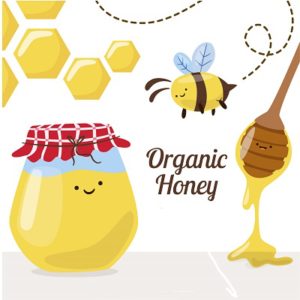 Not all sugar is created equal. Some are good for you while others are not only bad, but have been linked to some serious illnesses and diseases. To know why sugar is a big deal now, we have to know how our consumption has changed over the last century.
Not all sugar is created equal. Some are good for you while others are not only bad, but have been linked to some serious illnesses and diseases. To know why sugar is a big deal now, we have to know how our consumption has changed over the last century.
One-hundred years ago, we only had cane sugar, sorghum, honey and maple syrup as sugars. There were almost no processed foods, so most households baked or made their own foods, meaning they knew and could control what went into their food. Back then the typical American ate less than two pounds per year of each type of sugar.
Compare that with today, where we buy much of our food already made (and we don’t really know what was added), we are consuming up to 160 pounds of sugar per person per year.
So what is the big deal about eating too much sugar? It is a natural food isn’t it? To start, not all sugar is natural which we will get into in a minute. As far as why it is not good for us, too much sugar not only makes us fat, but also is a key reason why so many people have Type 2 diabetes, high blood pressure, heart disease, strokes, cancer and Alzheimer’s disease.
So now you know how much sugar you eating, but how much should you eat? According to the American Heart Association, women should have about 6 teaspoons per day or about 24 grams; men 9 teaspoons or 36 grams. The issue is all of the added sugars – not occurring naturally – in our food that unless we dissect the nutritional label, we don’t know are there.
There are 25 different types of sugars and sweeteners on the market today. While most of them are not good for you, we are going to cover the ones you can eat in moderation – the natural sugars like:
- fructose
- maple syrup
- honey
Fructose
The fructose we are talking about here is the kind found in fresh fruits. High-fructose corn syrup on the other hand is highly processed and not good for you.
Maple Syrup
Made by boiling down sap collected from maple trees, maple syrup is an excellent source of manganese and zinc. Besides being low in calories, the unrefined grade B maple syrup has a higher concentration of minerals than even honey. Avoid the pancake syrups that claim to be maple syrup as most of them are high fructose corn syrup with artificial flavorings and food colors.
Honey
Honey is a mixture of fructose and glucose and contains trace amounts of several vitamins, minerals and compounds researchers think act as antioxidants and anti-microbials.
Many allergy sufferers eat raw honey – honey not processed – to lessen their sensitivity to hay fever. Because raw honey is mildly antibacterial, antifungal and antiviral, you can also use it to treat small cuts or take a spoonful to settle a nauseous stomach.
By eating these three natural sugars in moderation, you can reduce your risk for many of the diseases caused by eating too much sugar in general.






